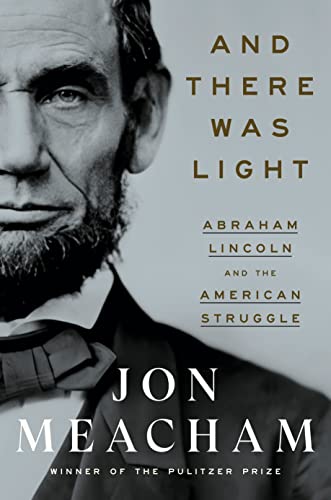

But everything changed in 1854, when Congress passed the Kansas-Nebraska Act, which allowed white residents of America’s western territories to vote on whether to enslave the territories’ black inhabitants. Lincoln entered politics as a Whig, with commonplace ideas and modest prospects. Nowadays, when it is so fashionable to demean and slander the great men of American history, it’s refreshing to encounter a book that is unafraid to defend the reputation of one who has a fair claim to being the greatest. Such things make it all the more gratifying that Jon Meacham would offer an up-to-date, smoothly written, and objective new biography that makes a powerful case for Lincoln’s merits while acknowledging his genuine shortcomings.

to label him a “conservative white supremacist”-a notion endorsed by Bennett’s admirer, Nikole Hannah-Jones, in the New York Times’s “1619 Project.” 2 These words have led writers such as Lerone Bennett Jr. The president who insisted on what he called “the principle of ‘Liberty to all’-the principle that clears the path for all gives hope to all”-also said he was “not nor ever have been in favor of making voters or jurors of negroes, nor of qualifying them to hold office, nor to intermarry with the white people” (207, 168). More recently, some activists have turned against Lincoln, citing his hesitant approach to the rights of black Americans and his occasional use of racist language. He said the nation was fighting for liberty-but approved the arrest of dissidents and the suspension of habeas corpus. He insisted on equality-but refused to endorse black suffrage. His Emancipation Proclamation freed slaves-but only in states over which he had no effective control. Lincoln’s actions and words could, indeed, appear inconsistent.


It features one hand relaxed to represent peace, the other clenched in a fist to symbolize war. Even during his lifetime, many said that Lincoln was as disunited as the country he sought to lead some even claimed to see his asymmetrical visage as proof of internal contradictions-an observation that Daniel Chester French built upon when sculpting the statue for the Lincoln Memorial. Such disagreement seems fitting in Lincoln’s case-an apt symbol of the way the Great Emancipator was, and remains, a subject of divided opinion. The most common version of the story holds that Stanton said, “Now he belongs to the ages.” But some thought his words were more prosaic: “Now he belongs to the angels.” 1 When Abraham Lincoln died in a bricklayer’s house across from Ford’s Theater on April 15, 1865, the weeping secretary of war, Edwin Stanton, said.


 0 kommentar(er)
0 kommentar(er)
